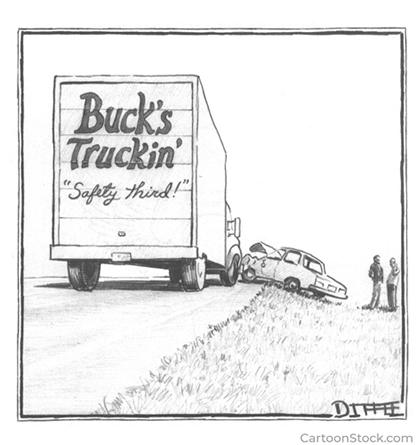
How to scan the road for potential hazards
Most drivers have a basic understanding of how to scan the road for potential hazards. However, with the ever-increasing amount of traffic and distractions, it is more important than ever to be vigilant when behind the wheel. Here are a few tips on how to scan the road for potential hazards:
- 1. Pay attention to the traffic around you. This includes not only other vehicles, but also pedestrians, cyclists, and even animals. Be aware of what is happening on the road and be prepared to react accordingly.
- 2. Keep your eyes moving. Don't fixate on any one thing for too long. Instead, scan your surroundings constantly, looking for potential hazards.
- 3. Use your mirrors. Mirrors can give you a wider view of what is happening around you and can help you spot potential hazards that you might otherwise miss.
- 4. Be aware of blind spots. Every vehicle has blind spots, so make sure to check yours before changing lanes or making a turn.
- 5. Watch for warning signs. Road signs are there for a reason, so make sure to pay attention to them. They can warn you of potential hazards ahead.
By following these tips, you can help make sure that you are aware of potential hazards on the road. Stay safe out there!
How to judge the speed and distance of oncoming traffic.
It can be difficult to accurately judge the speed and distance of oncoming traffic, especially when you are driving. Here are a few tips to help you better estimate the speed and distance of oncoming traffic:
- 1. Use your peripheral vision. When you are looking straight ahead, you can only see a small portion of the road in front of you. By using your peripheral vision, you can see a larger portion of the road and get a better idea of what is coming.
- 2. Look for reference points. When you are trying to estimate the speed of oncoming traffic, look for reference points like trees, buildings, or road signs. This will help you better gauge the speed of the oncoming traffic.
- 3. Use the car in front of you as a reference. If you are having trouble estimating the speed of oncoming traffic, use the car in front of you as a reference. If the car in front of you is going the same speed as the oncoming traffic, then you can assume that the oncoming traffic is going the same speed as well.
- 4. Err on the side of caution. When in doubt, always err on the side of caution. If you are unsure of the speed or distance of oncoming traffic, it is better to slow down or stop completely than to risk an accident.
How to deal with glare from the sun or headlights.
How to Deal With Glare From the Sun or Headlights If you find yourself squinting to see the road ahead while driving, you may be experiencing glare. Glare can come from the sun during the daytime or from oncoming headlights at night, and can be a real nuisance. Here are a few tips on how to deal with glare so you can see the road ahead clearly.
If you're having trouble with glare from the sun, try wearing a pair of sunglasses. They will help to reduce the amount of light that's entering your eyes and causing you to squint. If you don't have a pair of sunglasses handy, you can also try tilting your head down slightly so that the brim of your hat or the visor in your car is blocking the sun.
If you're having trouble with glare from oncoming headlights, you can try flipping down the visor in your car. This will help to block some of the light. You can also try looking to the left or right of the oncoming traffic so that you're not looking directly into the headlights.
If you find that you're still having trouble seeing despite taking these measures, you may need to clean your windshield. A dirty windshield can cause glare, so make sure to give it a good cleaning inside and out. By following these tips, you should be able to reduce the amount of glare you're experiencing and see the road ahead more clearly.















